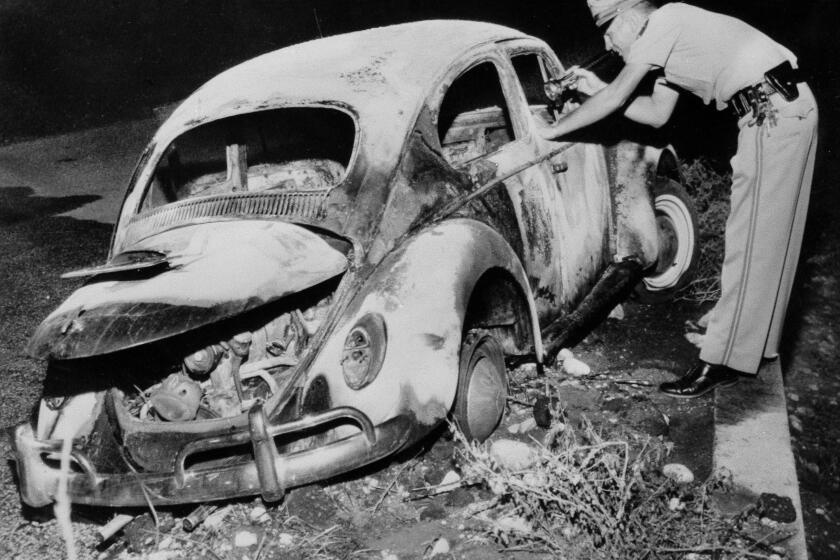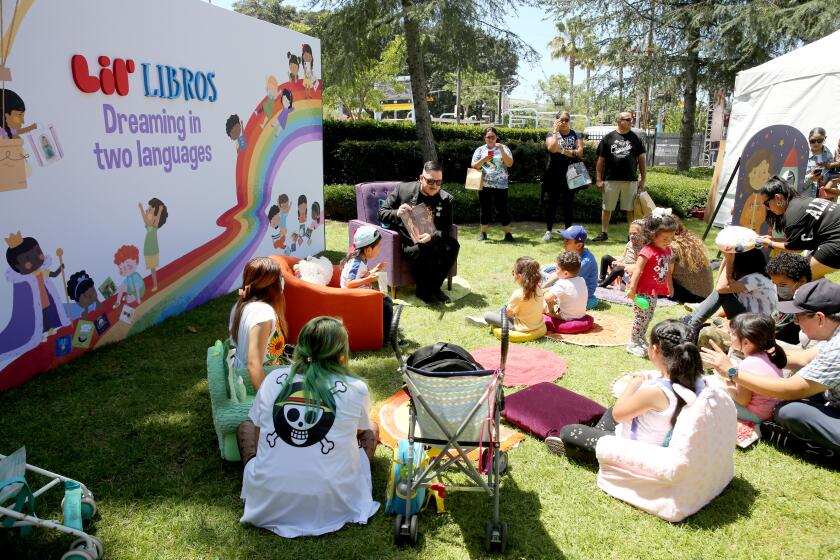Op-Ed: What do artists and their fans owe each other?

- Share via
I started taking antidepressants a few months after my first novel came out. I couldn’t sleep at night, I cried at random moments during the day. I had presumed that publishing a book would make me feel more understood. Yet I felt more disconnected from people than ever.
I should have known better. A painter doesn’t have control over how their canvas is interpreted, why would it be different for a writer? Before publishing “Catalina,” I was a special collections library assistant at the Getty Research Institute, retrieving and returning archives from the vaults. An archive is the stuff that gets left behind — the meticulous recording of every note, email, drawing or receipt, saved and stored so that one day someone might glean something from them — that make an artist seem like an ordinary human. The séance of the archive, researchers sometimes call it, as they attempt to describe the feeling of wanting to possess both the artwork and artist; of wanting someone to identify with rather than something.
During the countless hours I spent poring over the archives for work, I found pleasure in humanizing the Guerrilla Girls — the anonymous feminist group, famous for their billboards outside the Met. Reading over their faxes and letters and receipts I learned of infighting, backstabbing and petty jealousies. This is just like me and my girlfriends, I thought, because we published a zine together.
Didion’s most famous essay was about my mother’s murder trial, set in California’s broken dream. It turned out to be right.
Then there were the times when an artist would conflict with who I imagined them to be. Combing through the surrealist photographer Man Ray’s papers and postcards, I discovered he wanted to paint and despised making a living from photography. I had to reconcile that fridge magnet I owned of “Le Violin de Ingres” (Ingres’ Violin) with the man who only wanted someone to value his painting “The Imaginary Portrait of the Marquis de Sade” as much as he did.
I’m guilty of this with writers too. I’m a huge Eve Babitz fan. She represents old L.A. to me. If I read a line from “Eve’s Hollywood” or “Slow Days Fast Nights” or “Sex and Rage,” I am compelled to go directly to Musso and Frank’s and order two gin martinis with a twist, a New York steak and a split wedge salad. Always followed by a drive along Mulholland, smoking Nat Sherman cigarettes with all the windows rolled down. But then I read “Black Swans” and she seemed out of touch and inordinately privileged. My image of her had been tainted, as if stolen from me, and I felt frustrated, angry. There were no gin martinis or steaks or a drive through the canyon after I finished it.
“Words. To make somebody understand,” is a line from Jean Rhys’ “Quartet” that, to me, gets at the desire for transfiguration through the written word and at just how limited words can be. They are ripe for misunderstanding, which is why the relationship between writer and reader is ambiguous at best. All of which I knew when “Catalina” was published.
But knowing and feeling are two different things. As an artist I want to transfer the ideas hidden deep in my core. But I have no control over how my art is consumed. How I communicate, feel and fall are all outside of my control once my words are in a reader’s hands.
Perhaps the most impactful thing a parent of color can do is encourage their kids to read books. It will help them know themselves and others better.
Even though “Catalina” is not an autobiographical novel, I had written it to make somebody understand how I see the world. So, when, in an early review, my protagonist Elsa was labeled promiscuous, I felt as if she were being summed up, cast aside. I had written Elsa to be intentionally challenging; to represent every woman considered attractive who felt the weight — and the judgment — of that consideration. Shouldn’t my words have revealed the absurdity of our expectations for women? Calling her promiscuous felt like it was summarizing a complex woman and dismissing her, judging her. I saw it as a misinterpretation of my intent and, therefore, of me.
It’s been five years since “Catalina” was published, and I sometimes still feel that disconnect, but the fundamental need for connection is the reason I write and it’s the reason I read. As a writer I want to be understood. As a reader I want to find understanding. Is it enough to hold on to what I relate to from Babitz’s writing and leave the rest? Can I appreciate Man Ray’s photography and still be sympathetic to his painterly ambitions? The reader in me embraces the concept. The artist balks.
Every one of us is searching for what it means to be us. And, in that search, artists and their work become something for us to inhabit, to explore who we are, our likes and dislikes, how we want to see the world. Which can sometimes make the artist, who created from a place of need for understanding and intimacy, feel even more alone. But maybe the beauty of art is that it can serve as a bridge, a space where — even briefly — we see one another.
Liska Jacobs is an essayist and novelist. Her third book, “The Pink Hotel,” is set to be published July 19. @LiskaJacobs
More to Read
A cure for the common opinion
Get thought-provoking perspectives with our weekly newsletter.
You may occasionally receive promotional content from the Los Angeles Times.












